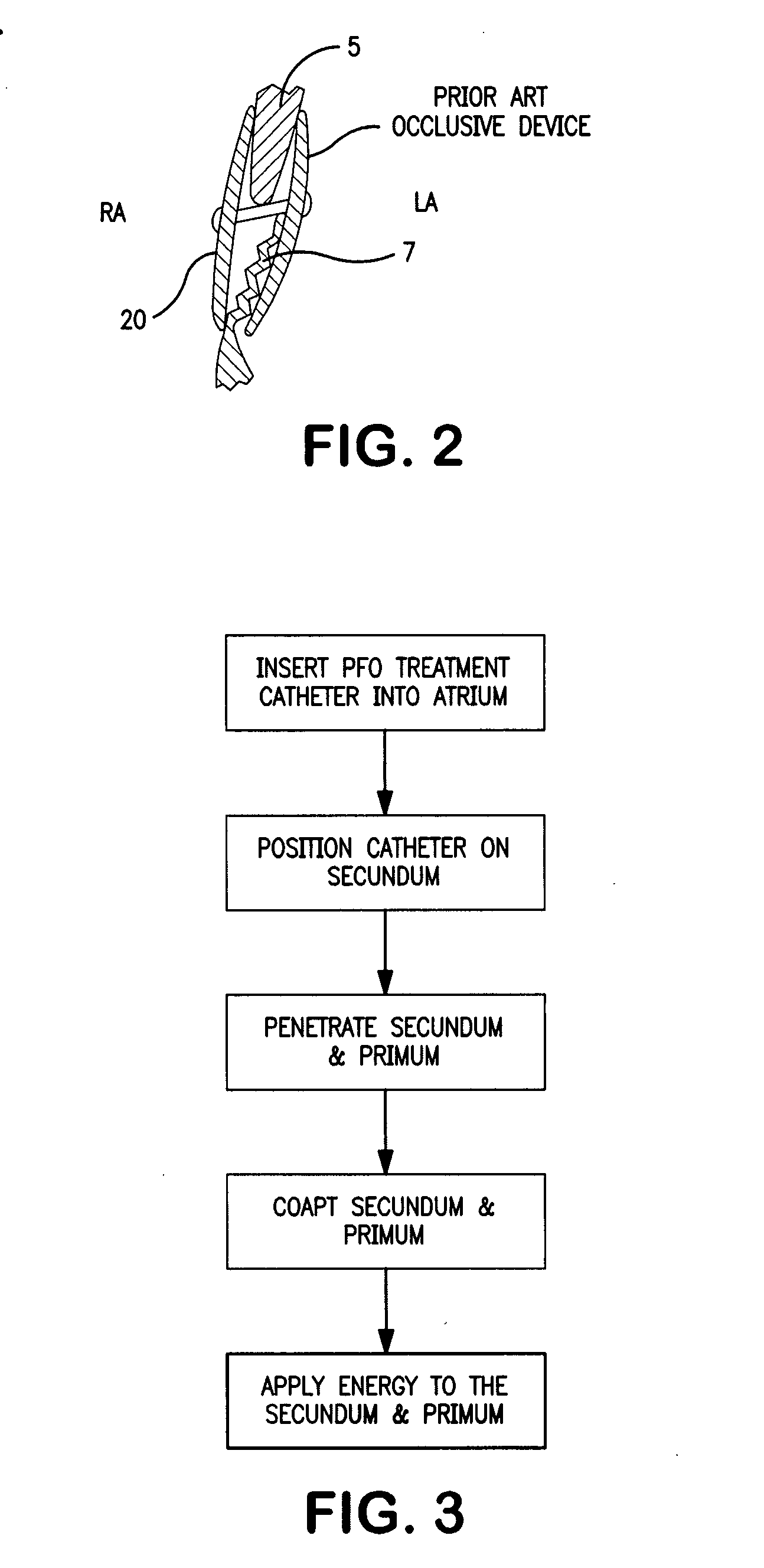Transseptal closure of a patent foramen ovale and other cardiac defects
a transseptal and patent technology, applied in the field of cardiology, can solve the problems of cryptogenic stroke, high risk of surgery, serious health risks, etc., and achieve the effect of easy identification, positioning, and penetration
- Summary
- Abstract
- Description
- Claims
- Application Information
AI Technical Summary
Benefits of technology
Problems solved by technology
Method used
Image
Examples
Embodiment Construction
[0045] Referring now to the drawings, the flow chart of FIG. 3 describes a method of therapeutically closing or occluding a PFO 1. Generally, the treatment method involves inserting PFO treatment catheter 21 configured to transseptally deliver energy to the secundum 5 and the primum 7 to affect joining or welding of these tissues.
[0046] PFO treatment catheter 21, in accordance with the present invention is illustrated in FIG. 4A. PFO treatment catheter 21 should be long enough to extend from an insertion site to interatrial septum 3. Typical lengths for catheter 21 include, but are not limited to, a range of about 50°-200 cm and preferably sized between about 2-15 French. Suitable materials for PFO treatment catheter 21 include, but are not limited to, various polyethylenes, polyurethanes, polysilicones, other biocompatible polymers and materials well known to those skilled in the catheter arts. The interior 22 of catheter 21 is adapted to allow passage of one or more other cathete...
PUM
 Login to View More
Login to View More Abstract
Description
Claims
Application Information
 Login to View More
Login to View More - R&D Engineer
- R&D Manager
- IP Professional
- Industry Leading Data Capabilities
- Powerful AI technology
- Patent DNA Extraction
Browse by: Latest US Patents, China's latest patents, Technical Efficacy Thesaurus, Application Domain, Technology Topic, Popular Technical Reports.
© 2024 PatSnap. All rights reserved.Legal|Privacy policy|Modern Slavery Act Transparency Statement|Sitemap|About US| Contact US: help@patsnap.com










